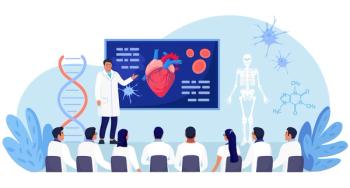
How physicians can utilize National Immunization Awareness Month
This is a good time for practices to revisit vaccines and remind staff and patients about the importance of immunization education.
August is National Immunization Awareness Month (NIAM) and offers physicians a reminder to educate patients about the importance of vaccines.
After the infant years, vaccination can sometimes take a backseat to the many other issues handled within a primary care practice. Ian Branam, a spokesperson for the Centers for Disease Control and Prevention (CDC) said this is why the annual observance was created-to highlight the importance of vaccination throughout the lifespan.
“National Immunization Awareness Month was established to encourage people of all ages to make sure they are up to date on the vaccines recommended for them,” Branam told Medical Economics. “Communities have continued to use the month of August each year to raise awareness about the important role vaccines play in preventing serious, sometimes deadly, diseases.”
Immunizations represent one of the greatest public health accomplishments of the 20th century, said Branam.
The power of physician recommendations
While there have been anti-vaccination movements in recent years that have led to a resurgence in diseases like measles, clinician recommendation remains a strong predictor of vaccination for a patient.
“We encourage clinicians to give a strong recommendation for the vaccines their patients need and to take the opportunity to assess their patient’s vaccination status at every visit,” Branam said. “We also encourage physicians to talk with their colleagues and office staff about the importance of ensuring clear, consistent communication about vaccines and making sure that patients are receiving all the recommended vaccines.”
There are many resources to help clinicians observe
Addressing all age groups
The toolkit offers CDC recommendations and resources for the immunizations needed for each stage of life, including:
• Babies and children: Vaccination14 diseases by age 2, and boosters between
• Pre-teens and teens: Immunization with a serogroup B meningococcal vaccine to protect against meningitis and septicemia; the HPV vaccine to protect against cancers caused by human papillomavirus; Tdap to protect against tetanus, diphtheria and pertussis; and annual flu vaccination.
• Adults: Annual vaccination against seasonal flu and one dose of Tdap if they did not receive it as a teen, then the Td booster every 10 years. Adults may also require vaccination against hepatitis A and B, HPV, and other diseases depending on their medical conditions, occupation, or travel practices.
• Pregnant women: Tdap vaccine for each pregnancy, preferably between 27 and 36 weeks.
• Older adults: Adults 60 years and older should receive the shingles vaccine, and those 65 and older are advised to receive one or more pneumococcal vaccines.
NPHIC has also designated each week of NIAM 2017 to particular audiences-
The goal is to help clinicians remind
In addition to the toolkits,
Newsletter
Stay informed and empowered with Medical Economics enewsletter, delivering expert insights, financial strategies, practice management tips and technology trends — tailored for today’s physicians.















